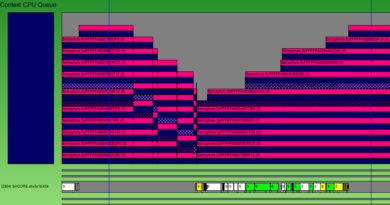Homes Sold Near Me: Discovering Insights, Trends, and Market Analysis
The search for “homes sold near me” has become a valuable tool for anyone involved in real estate. Whether you’re a buyer seeking to understand local prices or a seller looking to gauge demand, recent home sales provide a wealth of insights that help inform real estate decisions. By examining homes that have recently sold nearby, you gain a glimpse into pricing trends, neighborhood desirability, and factors that influence property value. Let’s explore the essentials of understanding the homes sold near you and the significance of this data.
What “Homes Sold Near Me” Means for Buyers and Sellers
Homes sold near you reveal what local buyers are willing to pay and show current demand trends. For buyers, knowing the sale prices of nearby properties can help them craft competitive offers and avoid overpaying. Meanwhile, sellers can see comparable properties in their area, which helps in setting a realistic listing price. Both sides benefit from these insights, allowing for informed decisions based on concrete data.
Benefits of Checking Homes Sold Near Me
There are several benefits to examining homes sold nearby. First, it helps in setting realistic expectations about home prices in a specific area. For prospective buyers, it’s an opportunity to understand how far their budget can stretch, while sellers gain a clear perspective on pricing competitiveness. Additionally, understanding local market behavior, such as how quickly homes are sold, provides a glimpse into neighborhood desirability and demand.
How to Find Homes Sold Near Me
There are various tools and online platforms to access data on homes sold near you. Websites like Zillow, Realtor.com, and Redfin provide comprehensive data on recent sales, often including sale prices, property details, and transaction dates. Many Multiple Listing Service (MLS) databases offer information on nearby sold homes, accessible directly or through real estate agents. Exploring these platforms helps you analyze prices, property types, and neighborhood trends efficiently.
Reasons to Search for Houses Sold Nearby
Both buyers and sellers can benefit from searching for nearby sold houses. Buyers use this data to gauge fair prices and identify undervalued properties, while sellers can price their homes competitively by analyzing similar local sales. Furthermore, it’s a valuable metric for investors looking to determine the rental or resale potential of properties in specific areas.
Understanding Local Market Trends
The local real estate market is continually influenced by the number and price of homes recently sold. By looking at local trends, you can determine if a neighborhood is on an upward trajectory, stagnating, or experiencing a decline. Observing trends over several months or years, like increases in average sale prices or rapid sales, provides insights into whether a location is becoming more desirable.
Key Metrics for Evaluating Sold Homes
Metrics like the average sale price, the number of days on the market, and property condition are crucial for evaluating sold homes. These numbers help gauge the overall health of the market and identify the types of properties in high demand. Areas with homes that sell quickly often indicate high demand, while longer selling times could signal overpriced properties or a less desirable location.
Factors Influencing Property Prices
Several factors influence property prices, including the neighborhood’s overall condition, proximity to schools and amenities, and recent renovations. A home in excellent condition and near desirable schools typically commands a higher price than similar homes in less sought-after areas. Other factors, such as square footage, layout, and energy-efficient upgrades, also contribute significantly to final sale prices.
How Long Do Homes Stay on the Market?
The average number of days a home remains on the market varies by location and price range. In hot markets, homes may sell within days, while other areas may experience properties lingering for months. A high demand typically shortens the selling period, which can be an indicator of a desirable location and robust housing market. Buyers and sellers should observe these patterns to anticipate the speed of transactions.
Steps to Assess Neighborhood Popularity
Popularity indicators include the frequency of homes sold, increased property values, and the influx of amenities or developments. Neighborhoods with expanding facilities, low crime rates, and good schools tend to draw more buyers, raising property demand. Checking recent home sales in such areas gives you clues about future price appreciation and investment potential.
How Property Taxes Impact Home Sales
Property taxes are a significant component of home ownership costs. Higher property taxes can deter some buyers, while lower taxes may attract them. Examining the property tax rates of recently sold homes can help buyers and sellers anticipate ownership costs. It’s also valuable for spotting tax trends, which are often influenced by government projects, school funding, and community services.
Comparing Sale Prices Over Time
Tracking sale prices over time gives a broader perspective on a neighborhood’s growth or decline. In areas experiencing consistent appreciation, buying can offer long-term gains, while regions with fluctuating prices may be better suited for short-term investment or rental. Reviewing historical sales data equips buyers with the knowledge to assess stability or volatility in local real estate.
Seasonality and Home Sales
The timing of your purchase or sale can impact property value. Homes sold in spring and summer generally attract higher prices due to increased demand. Winter, on the other hand, tends to have lower prices due to a smaller pool of buyers. Recognizing these seasonal patterns helps both buyers and sellers to plan transactions strategically.

Top Platforms to Check Recent Sales
Real estate websites like Zillow, Redfin, Realtor.com, and regional MLS services offer extensive data on recent property sales. These platforms provide users with details on pricing, property types, and transaction timelines. Additionally, each offers unique filters and mapping tools to streamline searches for homes sold nearby.
Using Mobile Apps for Local Sales Data
Mobile apps from major real estate platforms, such as Zillow and Realtor.com, provide on-the-go access to recent sales data, helping buyers and sellers get real-time updates. These apps are especially useful for open houses or neighborhood tours, allowing users to view information on local properties at a glance.
Assessing Property Conditions from Sale Data
Understanding a property’s condition is vital for accurate pricing. Listings often contain photos and descriptions that reveal the home’s state before sale. Reviewing these details on recently sold homes allows potential buyers to assess the types of upgrades common in the area and the condition standards buyers are willing to pay for.
The Role of Agents in Analyzing Sold Properties
Real estate agents bring expert knowledge and access to MLS data, which can provide deeper insights into sold properties. An experienced agent can help you interpret market trends, negotiate prices, and provide information on comparable sales. Partnering with an agent simplifies the process of evaluating homes sold near you, adding a layer of professionalism to your search.
Determining Future Value from Recent Sales
Recent sales data can be a good predictor of a property’s future value. Buyers interested in long-term investment can look at neighborhoods where prices have appreciated consistently. These trends often indicate stable or growing demand, suggesting potential for future appreciation.
Common Pitfalls When Checking Sold Homes
Avoid overvaluing minor upgrades or assuming that high prices in one neighborhood apply universally. Buyers and sellers must consider all factors, from property age to surrounding developments, to understand value. Checking multiple sources and avoiding assumptions helps ensure accurate and realistic valuations.




